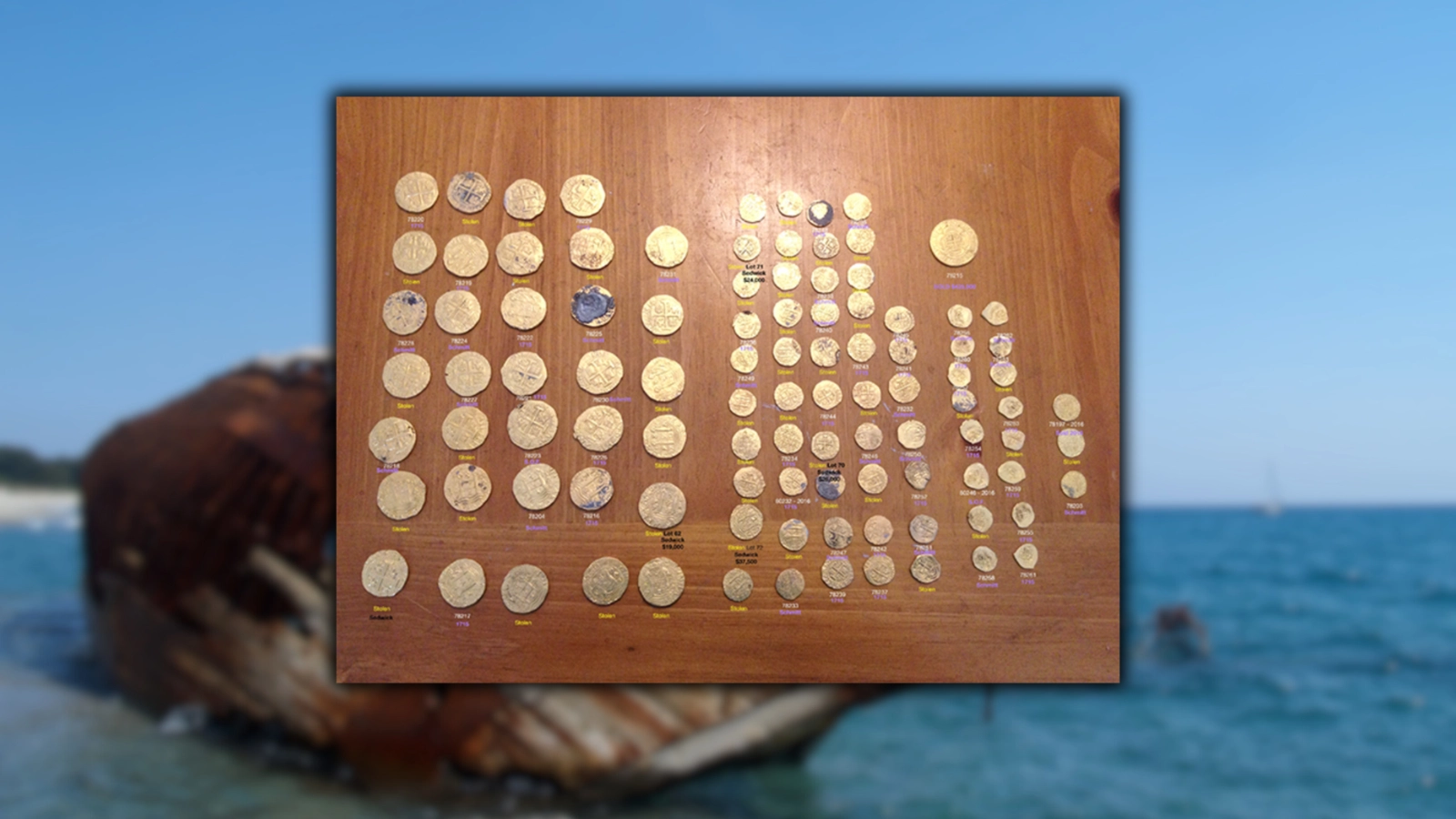The stolen gold coins from the 1715 Spanish shipwrecks, valued at over $1 million, have returned to Florida after over ten years.#St. Lucie County, Florida, #News, #Crime
Florida’s St. Lucy CountyIn a startling turn of events, Florida officials reported that 37 stolen gold coins worth over $1 million had been found. These coins were originally from a series of Spanish ships that were lost to a hurricane about 300 years ago, the 1715 Fleet wrecks off the Treasure Coast of Florida. The FBI and the Florida Fish and Wildlife Conservation Commission (FWC) conducted an investigation that led to the discovery of the illegally seized coins.
The 1715 Fleet: A Historic Treasure Lost at Sea
A collection of Spanish treasure ships known as the 1715 Fleet went down during a strong hurricane in July 1715 off the coast of Florida. These shipwrecks have been a gold mine for salvagers over the ages, yielding valuable historical relics in addition to gold.
As contracted salvage operators for 1715 Fleet Queens Jewels, LLC, the Schmitt family made the astounding discovery of 101 gold coins in 2015. Only 51 of these coins, meanwhile, were appropriately reported and handled legally; the other 50 were subsequently stolen.
Both state and federal law safeguard these relics, and it is a grave offense to remove them without permission. The theft remained undiscovered for a number of years until fresh evidence surfaced, despite its historical and legal significance.
Investigating the Stolen Coins
When investigators discovered fresh evidence in June 2024 that connected Eric Schmitt to the illicit sale of the stolen coins, the case took a significant turn. Together with the FBI, FWC agents carried out a number of search warrants, locating the coins in a range of places, such as auctions, safe deposit boxes, and private residences.
The investigation’s most interesting component included a Florida-based auctioneer who, without realizing it, bought five of Schmitt’s stolen coins. This finding was crucial to the inquiry and allowed for a more thorough examination of Schmitt’s actions.
Investigators were able to link a photo of the pilfered coins to Schmitt’s Fort Pierce apartment by using metadata and geolocation information. The 2016 photo played a key role in connecting Schmitt to the heist. The case became much more complicated when investigators discovered that Schmitt had purposefully deposited three of the stolen coins on the ocean floor in 2016, most likely so that they would be discovered by future investors and treasure seekers.
Legal Consequences and the Ongoing Search
As FWC works to retrieve the remaining 13 stolen coins, Eric Schmitt is now being charged with dealing in stolen property. Mel Fisher-Abt, an expert in historical preservation, has authenticated and evaluated the coins that have been recovered thus far. In compliance with Florida’s stringent regulations safeguarding cultural heritage, these coins will be returned to the appropriate authorities.
According to FWC Investigator Camille Soverel, this case emphasizes how crucial it is to protect Florida’s rich cultural legacy and hold those who try to take advantage of it accountable. The seriousness of preserving the state’s undersea past is brought home by Schmitt’s arrest.
Associated Subjects: Crime, History, and Florida
We appreciate your input!Was this article thought-provoking, inspirational, or educational to you? Join the conversation by leaving a comment below. We value your feedback and eagerly await your response!
Note: Every piece of content is rigorously reviewed by our team of experienced writers and editors to ensure its accuracy. Our writers use credible sources and adhere to strict fact-checking protocols to verify all claims and data before publication. If an error is identified, we promptly correct it and strive for transparency in all updates, feel free to reach out to us via email. We appreciate your trust and support!




